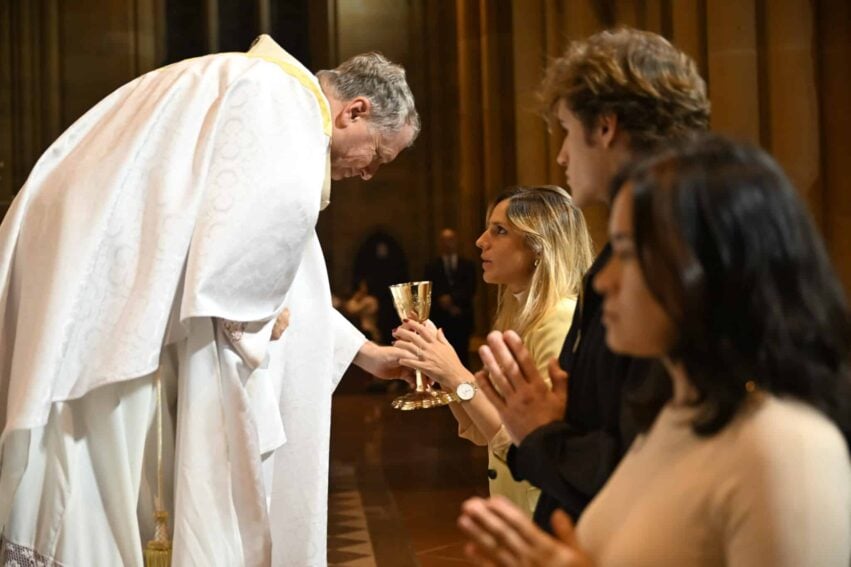
Dear Fr John Flader, Someone told me there are a lot of parallels between the Jewish Passover and the Eucharist. Is this true?
It is certainly true. We should recall that the first celebration of the Passover, as related in the book of Exodus (cf. Ex 12:1-14), was celebrated on the night before Moses led the Israelites out of Egypt after their 430 years there, ending in virtual slavery.
On that night they were to put some of the blood of a one-year-old male sheep or goat on the doorposts and lintel of their houses, so that the angel of death would pass over them when he went through Egypt and killed the first-born male of the Egyptian families and their animals.
They were to eat the animal roasted over a fire, with unleavened bread and bitter herbs, standing up with sandals on their feet and staff in hand, ready to depart and leave behind their years of slavery. And they were to continue to celebrate this ritual every year down the ages as a perpetual ordinance.
Since then, the Jews have continued to celebrate the Passover as one of the principal feasts of their calendar. It is the celebration of their liberation from slavery in Egypt, the manifestation of God’s power and mercy.
It must always be remembered that the Passover meal, the Seder, was not an ordinary meal like any other, but a sacred ritual whose different moments were prescribed in detail. These included the order in which the different foods were eaten, the prayers to be said, the questions to be asked, the psalms to be recited, the four cups of wine to be consumed at precise moments, etc.
The Passover, in the providence of God, was to be replaced by and brought to fulfilment in the celebration of the Eucharist by Jesus Christ, the long-awaited messiah. Significantly, it was in the very celebration of the Passover that Jesus instituted the Eucharist.
St Luke records that Jesus told the apostles at the beginning: “I have eagerly desired to eat this Passover with you before I suffer; for I tell you, I will not eat it until it is fulfilled in the kingdom of God” (Lk 22:15-17). That is, the ancient Passover would be fulfilled, and given its definitive meaning, in the Eucharist. The parallelism between the Passover and the Eucharist is manifold.
Just as the Passover commemorates the deliverance of the Israelites from their slavery in Egypt, so the Eucharist commemorates our deliverance from the much greater slavery to sin by Christ’s redemptive death on the Cross.
As the first Passover was celebrated on the night before the Israelites left Egypt, so the Eucharist was instituted on the night before Christ redeemed us by dying on the cross.
As in the first Passover the Israelites consumed a lamb or goat without blemish, in the Eucharist we receive the unblemished Lamb of God, Jesus himself.
As the first Passover would lead to the promised land of Canaan, the death of Christ celebrated in the Eucharist opens the way to the definitive promised land of heaven.
As the death of the first-born male of the Egyptians moved the Pharaoh to end the Israelites’ slavery, so the death of Jesus, the first-born and only-begotten son of Mary and the only-begotten Son of God, moved the Father to free mankind from the slavery of sin.
As the blood of the lamb sprinkled on the doorposts and lintels of their houses saved the Israelites from the angel of death, so the blood of the Lamb of God saved mankind from eternal damnation.
As the Israelites consumed unleavened bread and cups of wine in the Passover, Christians receive the body and blood of Christ in the Eucharist, using unleavened bread and wine.
Just as at the time of Christ the killing of the Passover lambs in the Temple began at 12 noon, so at that very hour Jesus, the Lamb of God, was offered on the altar of the Cross.
As is clear, there are many parallels between the Passover and the Eucharist. In my next column I will write about more parallels, this time between the Seder meal itself and the Eucharist.
